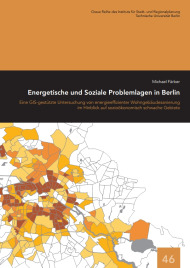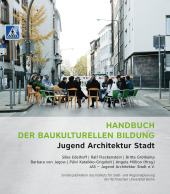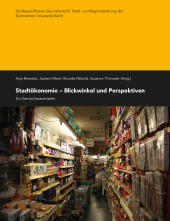Energetische und Soziale Problemlagen in Berlin
Eine GIS-gestützte Untersuchung von energieeffizienter Wohngebäudesanierung im Hinblick auf sozioökonomisch schwache Gebiete

Publishing year: 2013
“Energy efficiency refurbishment measures in the context of climate change mitigation form the background for spatial analysis of the residential building stock in Berlin by the paper “”Areas Combining Energy Related and Socio-Economic Related Problems in Berlin – A GIS-Based Analysis of Energy Efficient Refurbishment of Residential Buildings with Special Regard to Areas of Socio-Economic Disadvantages””. The content is situated in the context of global climate change, national and local mitigation measures within topics of urban renewal and social development. The leading question of the paper is about: Where in the city of Berlin are areas situated of high cost for energy efficient refurbishment combined with weak socio-economic conjuncture? In this context following questions are considered: Which legal instruments determine energy efficiency refurbishment? What is the relationship between landlord and socio-economic weak tenants concerning energy efficient refurbishment? What are costs of energy efficient refurbishment? Recommendations regarding the problem areas? Basics of energy efficient refurbishment are described and analysed on legislative, policy and financial framework conditions with regard to areas combining energy related and socio-economic related problems in Berlin. Main pillars are national and local energy saving targets, the German Energy Saving Ordinance (EnEV), ownership structures and socio-economic issues for tenants. To define and locate areas combining energy related and socio-economic related problems in Berlin the paper works with expert interviews, literature research, data acquisition of costs of energy efficient refurbishment, an urban space typology, spatial data of the Information System Urban and Environment (ISU) of the Senate Department for Urban Development and Environment of Berlin and a Geographical Information System (GIS). Spatial data of the environment, of energy efficient refurbishment and of socio-spatial aspects are aggregated in maps by digital spatial data processing to analyse their relationships. The result show a concentration of areas combining energy related and socio-economic related problems in inner city areas of Berlin. Based upon the paper recommendations include a calculation example for an area-based funding framework.”



